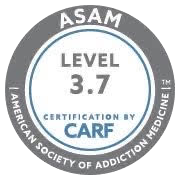Can Muscle Relaxers Help With Withdrawal From Tramadol?
Muscle relaxers help to reduce muscle spasm pain, but not without the risk of addiction. They are only available by prescription.
Call Us Today
Overview of Muscle Relaxers
Muscle relaxers serve several purposes. Most notably, they help relieve pain related to acute or chronic muscle spasms. These drugs are widely prescribed by medical providers. Certain statistics show there were nearly 35 million prescriptions for particular muscle relaxers prescribed in 2017.
When used as directed, muscle relaxants are beneficial components of a treatment plan. However, due to the effects of muscle relaxers on the body, they are also widely abused.1
Understanding Muscle Relaxers
Muscle relaxers are medications prescribed by medical professionals to help reduce muscle tension and pain. Typically, muscle relaxant medications are used to temporarily relieve muscle strain related to an injury.
They are beneficial for people experiencing pain and discomfort from muscle spasms associated with neck and back pain. They can also be used to address chronic (long-term) conditions that cause muscle pain, such as spinal injury, multiple sclerosis, and cerebral palsy.2
How do Muscle Relaxers Work?
Muscle relaxants are central nervous system depressants. They produce a sedative effect helping you to feel calm and relaxed. In some cases, their sedative properties can help induce sleep.
Potential for Misuse
Prescription muscle relaxers also prevent your nerves from sending pain signals from the body to the brain. In addition to relieving pain and causing sedation, some muscle relaxant drugs can produce euphoric effects on the user, making muscle relaxers a target for abuse and misuse.
Categories of Muscle Relaxers
Muscle relaxant medications are classified into two categories. Antispasmodics (SMRs) and antispastice. Antispasmodics are used to treat muscle spasms, and antispastics are used to address muscle spasticity. Spasticity is a condition where one suffers from an abnormal increase in stiffness or tone in a muscle that may interfere with movement and cause discomfort or pain.3
The Most Common Muscle Relaxers
Several different muscle relaxant medications are used by medical providers to address various medical needs. When adding a muscle relaxer to your treatment plan, it is crucial to consider the side effects of muscle relaxers and whether an alternative treatment model might better suit your needs.
Although muscle relaxers help relieve painful symptoms of specific health conditions, their use is not without risk. The most commonly prescribed muscle relaxers include Cyclobenzaprine, Tizanidine, Baclofen, Methocarbamol, and Carisoprodol. Combined, these five muscle relaxants accounted for nearly 35.5 million prescriptions in 2019.4
Additional Muscle Relaxer Pills
In addition to the top 5 prescribed muscle relaxer pills listed above, other commonly prescribed muscle relaxants include Carisoprodol (Soma), Chlorzoxazone (Lorzone), Dantrolene (Dantrium), Metaxalone, Orphenadrine, and various benzodiazepine drugs.
Common Side Effects
Mild side effects of muscle relaxants typically will subside as the drug wears off or after use stops. Common, mild side effects of most muscle relaxers include:
- Fatigue
- Dry mouth
- Nausea
- Constipation
- Headache
- Appetite changes
- Diarrhea
- Upset stomach
- Sleepiness
Severe Side Effects
Mild side effects of muscle relaxants typically will subside as the drug wears off or after use stops. Common, mild side effects of most muscle relaxers include:
- Blurred vision
- Difficulties urinating
- Fainting
- Light-headedness
- Ringing in the ears
- Yellow eyes or skin
- Hives
- Mental depression
- Clumsiness
- Extreme confusion
How Do Muscle Relaxers Work?
Muscle relaxant drugs work by encouraging your muscles to relax and become less tense and stiff. In turn, this helps to reduce pain and discomfort. Certain muscle relaxants accomplish this by impacting how the nerves communicate and send messages to the brain. Others work directly on the muscle itself. By blocking the signals sent to the brain from the body, muscle relaxers help reduce pain and discomfort.
Practical Use
Muscle relaxants are typically not the first treatment option for muscle pain; however, if over-the-counter measures are ineffective, your doctor may prescribe a muscle relaxer. If you struggle to manage acute muscle spasm pain or discomfort related to a chronic medical condition, these drugs may be a practical addition to a treatment plan.
What Can Muscle Relaxers Help With?
Although muscle relaxants can help with certain long-term pain conditions, medicine for muscle spasms is generally prescribed for acute pain conditions. This is due to muscle relaxer side effects and the potentially addictive nature of these drugs. Muscle relaxers can help with:
Pain
One of the most common uses for muscle spasm medication is to address pain. Muscle relaxants are often prescribed as a second-line treatment for back and neck pain when over-the-counter pain medications do not work. In some instances, such as a pinched nerve, sciatic nerve pain (sciatica), or spinal nerve pain, muscle relaxers help reduce pain and induce sedation allowing you to sleep and rest.Muscle relaxers also help with specific types of headaches, including tension headaches or migraines.5
Anxiety
Benzodiazepines are a specific category of muscle relaxants used to manage anxiety symptoms. The five most commonly prescribed benzodiazepines are Xanax, Ativan, Klonopin, Valium, and Restoril. Although beneficial for managing anxiety symptoms, benzodiazepine muscle spasm medications are highly addictive with a significant potential for abuse and misuse.6
Opioid Withdrawal
In 2018, the Food and Drug Administration approved the first muscle relaxant to reduce opioid withdrawal symptoms. Introducing this opioid withdrawal treatment option may help patients manage uncomfortable and unpleasant symptoms of tramadol withdrawal.
Side Effects and Risks of Muscle Relaxers
The side effects of muscle relaxers vary based on the specific medication and individual treatment needs. However, certain muscle relaxer side effects will present in most cases.7
Risk for Dependence and Addiction
It is important to remember that muscle relaxers have several potential side effects, including the risk of dependency and addiction. Certain muscle relaxers are more addictive than others due to the side effects produced by their use.
Minimizing Risk
Because of the risk for dependence and addiction, most courses of treatment involving muscle relaxant drugs last no longer than two or three weeks to minimize the risk of experiencing withdrawal symptoms when you stop taking the medication. The risk of addiction is why your provider may turn to other treatment options before prescribing a muscle relaxant to manage muscle spasms and pain.
Reach Out to San Diego Detox
If you had a painful condition that required a muscle relaxant and you developed an addiction to the drug as part of treatment, know that it is possible to overcome addiction. With detox help and therapeutic support from our professional treatment team, you can put the challenges of muscle relaxant addiction in the past. Talk with your doctor at San Diego Detox to learn more about how our programs can help.
Resources
https://www.deadiversion.usdoj.gov/drug_chem_info/carisoprodol/carisoprodol.pdf
https://www.ncpoisoncontrol.org/types-of-poisons/prescription-medicines/muscle-relaxers
https://www.ninds.nih.gov/health-information/disorders/spasticity
https://clincalc.com/DrugStats/TC/MuscleRelaxants
https://pubmed.ncbi.nlm.nih.gov/12696998/
https://www.deadiversion.usdoj.gov/drug_chem_info/benzo.pdf
https://www.mayoclinic.org/drugs-supplements/cyclobenzaprine-oral-route/side-effects/drg-20063236



